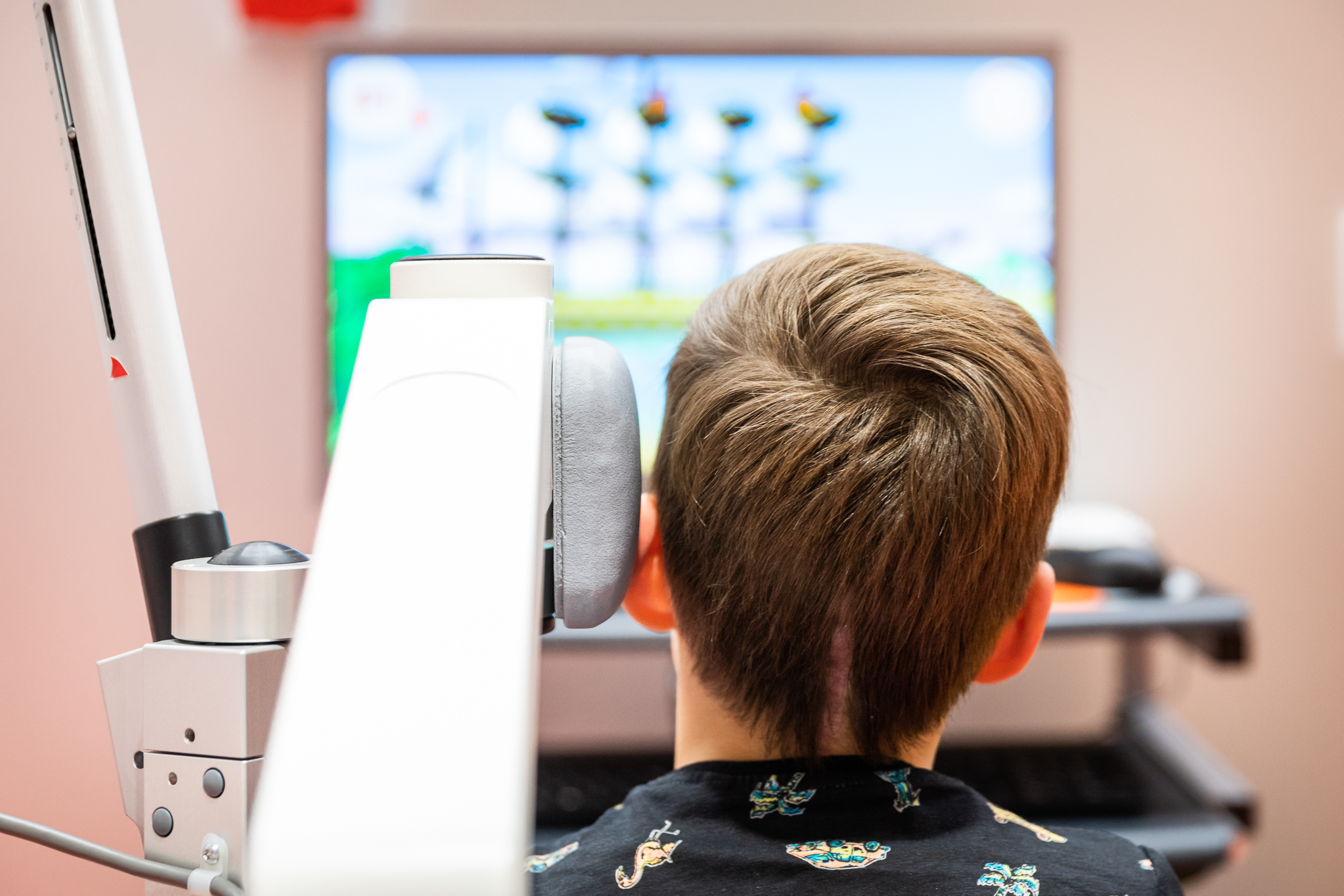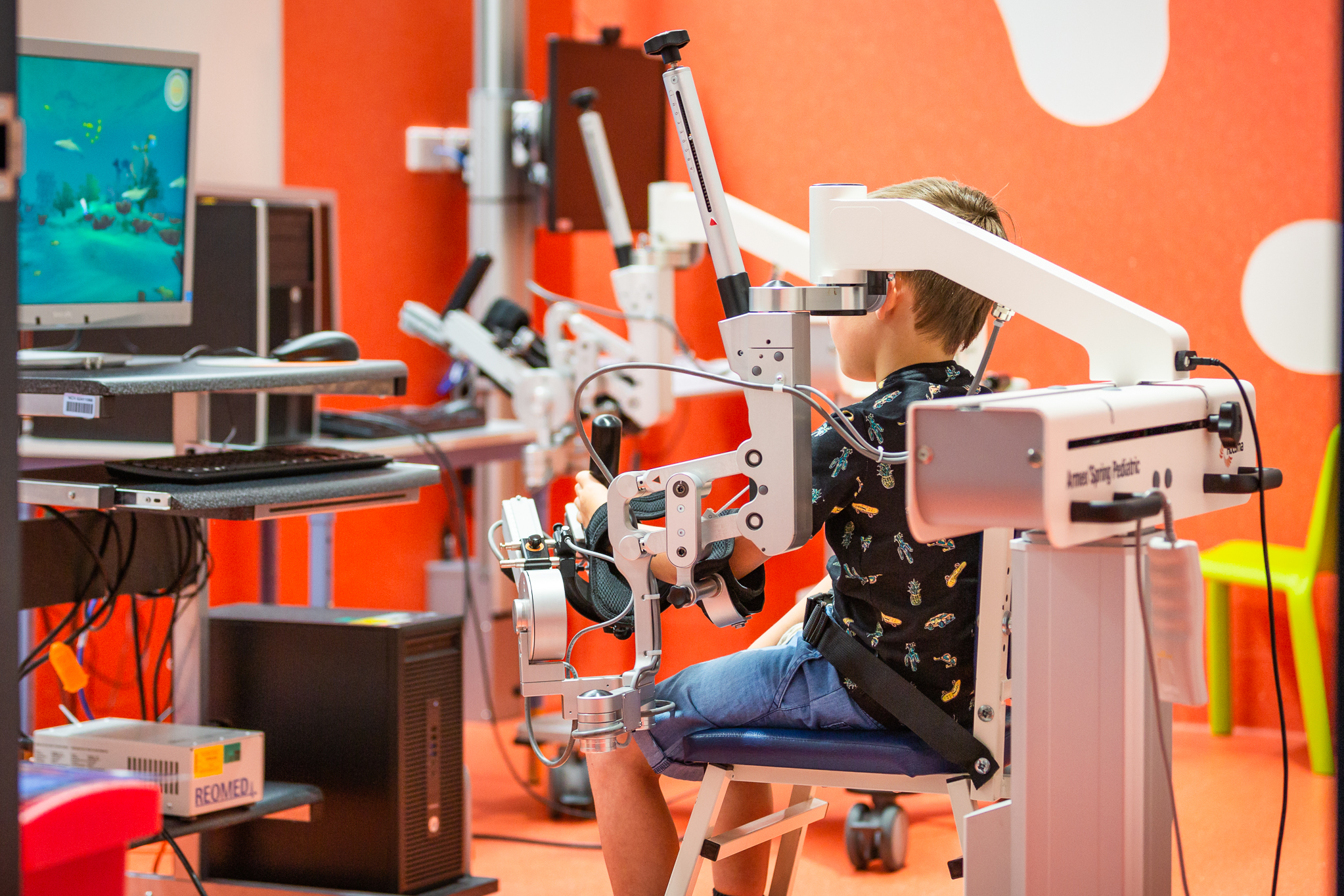iRehab
ToyBox International have been a valued contributor to Perth Children’s Hospital, and Princess Margaret Hospital before it, for more than ten years. During this time thousands of children from all over WA have benefited from ToyBox’s support for our state’s only specialist paediatric hospital. In recent years, ToyBox have provided significant support for the Department of Paediatric Rehabilitation, funding the purchase of an Armeo Spring Paediatric Device, commonly known as a robotic arm. This state-of-the-art equipment has been used extensively by children with conditions and illnesses such as acquired brain injuries resulting from childhood stroke and brain tumours, spinal injuries and neurological conditions.
The robotic arm’s ability to provide targeted therapy enhances recovery and it is designed to take advantage of the brain’s intrinsic plasticity mechanisms. It is well established that intensive, repetitive, self-initiated movement is important in maximising functional outcomes. Robotic therapy is able to stimulate these movements and its integrated software provides meaningful feedback. The use of interactive computer games makes the therapy more attractive to children and helps motivate them to achieve results.
This equipment has a significant impact on the lives of the children who use it. Access to the robotic arm funded by ToyBox has provided these children with the opportunity to get back to activities of normal daily living, faster than what would have otherwise been possible. This includes dressing themselves, using a knife and fork, holding a cup, and being able to participate actively at school, things that are usually taken for granted.
Pictured is 7 year old Nathaniel who benefited from the use of the robotic arm following the removal of a brain tumour. In Nathaniel’s words, the robotic arm helped ‘…to wake up my left arm…and made my arm more helpful’. Nathaniel said it ‘…made me concentrate on my arm, squeezing, moving and exercising’. The robotic arm remains a positive memory of Nathaniel’s rehab experience and to the relief of his parents, he looked forward to this part of his therapy. As his grateful mother Mia stated “When your child has gone through so much at a young age, anything that brings enjoyment and aids recovery is gold”.
As an integral part of the rehabilitation team’s intensive program, the robotic arm will continue to improve outcomes for children and also reduce the secondary complications associated with their injury.


